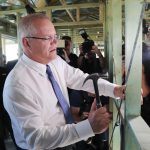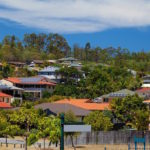Building Resilient Cities
Somewhere within the featureless expanse of brick and tile sprawl relentlessly consuming the Swan coastal plain, someone has taken the time to build a sustainable home.
"The future is here. It’s just not widely distributed yet" ~ William Gibson
Take a drive an hour south through the rapidly expanding growth corridor fusing Perth to Mandurah, and you’ll fly past a road sign at once hopeful and heartbreaking.
‘Sustainable Mandurah Home’ it points cheerfully. Somewhere within the featureless expanse of brick and tile sprawl relentlessly consuming the Swan coastal plain, someone has taken the time to build a sustainable home.
I have no issue with the house itself; it’s an intelligent blend of the state of the art and the bleeding obvious, it didn’t cost a fortune to build and it gives visitors a sense that energy and water-efficient homes are comfortable, practical and inexpensive to live in.
The heartbreak of course, is that this single house vanishes into a sea of tens of thousands of large, nearly identical unsustainable homes built in breathtaking defiance of the basic ground truths of the twenty-first century. Cabled to fossil-fired power stations hundreds of kilometres away, entirely dependent on cheap middle-eastern oil for mobility, emergency services and food; this great city is profoundly, utterly vulnerable. We won’t really understand the extent of our fossil dependence until its unspoken, gigantic flows of energy, water and resources are suddenly disrupted.
Much has been written about cities and sustainability in recent times; there’s a wild and creative flowering of theory and practice across our universities and cooperative research centres; demonstration projects are flourishing and whole new disciplines are being established before our eyes.
We’ve known – for a long while – how to build zero carbon houses and office buildings, but the art of building human-scale sustainable cities seemed to be lost to us. After the War, centuries of accumulated planning wisdom were rapidly eclipsed by the overwhelming demands of the private car and its corporate stewards. Cheap anywhere-to-anywhere transport spawned an unstoppable proliferation of places that feel like nowhere; a featureless topography of sub-urban sprawl mart development. Tram and bus transit alternatives made suddenly quaint by saturation automobile advertising were purchased and shut down by oil companies, leaving faint but persistent afterimages in the collective memory of our Australian cities.
Now we get to turn it around. Public transport is making a comeback: on drawing boards, in the Senate committee hearings taking place around the country, and in our neighbourhoods. Planners are revisiting the idea of urban village archipelagos, networks of medium and high density human-scale settlements linked with safe, fast, frequent public transport. With light rail proposals advancing in Canberra, the Gold Coast, Sydney and Perth, and the proposition of Commonwealth Government public transport funding for the first time in a decade, we may be on the edge of an urban tipping point.
Planning world-class public transport for our communities can catalyse a whole series of changes that are not immediately obvious. Public transport works best in high population centres when a critical mass of people are an easy walk or cycle from transfer stations. Densification reduces the urban footprint and can be a major driver for local economies. Embedding a high proportion of affordable housing in these centres, rather than condemning low-income families to the urban fringe, guarantees access to employment and creates the opportunity for vibrant social diversity.
Halt the sprawl once and for all and we’ll be able to protect and restore the ragged biodiversity and watersheds surrounding our cities. The reckless paving over of essential peri-urban agricultural land can also come to an end as we recall farmers and market gardeners to their central place in community life.
Electrifying public transport by installing light rail along the key corridors will lighten our vulnerability to rising oil prices and help prevent the horror of future oil wars. Demoting private cars from their pre-eminent position in the planning hierarchy will improve public health and reduce obesity, because every public transport trip starts with a walk or a cycle.
All of these ideas are taking shape in real-world neighbourhoods around Australia, but the dominant governance mindset is still the provision of more roads to reduce the congestion spawned by the last round of road-building. The resistance from vested interests and path-dependent bureaucratic structures will be fierce and frustrating, but that doesn’t make them right: the catastrophe taking shape everywhere between the Arctic circle and the Murray-Darling Basin is entirely non-negotiable.
When climate change or vicious price shocks at the foothills of peak oil take unleaded through $5 a litre, it will be too late to appreciate the heartbreaking irony written into the sign by the highway in Mandurah. The time for lonely demonstration projects by the side of the road is over. With persistence and goodwill it is possible to see our way through to the resilient city: the design and re-working of ecologically sane, human-centred communities that will be genuinely at home in the twenty-first century.
Senator Scott Ludlam is an Australian Greens Senator from Western Australia. He is the Australian Greens Spokesperson on Sustainable Cities. More information about Scott’s thoughts on sustainable cities is available at The Australian Greens.















Zacha
March 20, 2009 at 3:56 am
Having recently been in
Having recently been in Barcelona, I was really impressed by its decentralised planning. We were staying with friends near the Ciutadella Park, which seemed like the centre when we were there. When we went to Las Ramblas, they seemed like the centre. As did the Barri Gotic, the local 'Gherkin' building (eco-friendly tower) and even the Sagrada Familia. Barcelona is laid out so that you live, work and relax all around a local urban hub. Getting between hubs by public transport is easy, and walking between most hubs is do-able.
The idea of decentralized cities is an excellent one. And Sydney already seems to be moving in this direction (except for the walking between hubs part, obviously).
What I'm less comfortable with is the idea of moving people back into the centre of cities. While I like the idea in principle, I worry about the urban poor being dumped together in tower blocks as in the UK. This could just as easily lead to "walling away one group of people from the rest of the society, so that people become invisible to the mainstream, [which] is not a healthy part of the political process." (Prof, John Hills, in 'Anti-social housing' from BBC radio.) A good social mix would have to be part of the solution. Which is easier said than done.